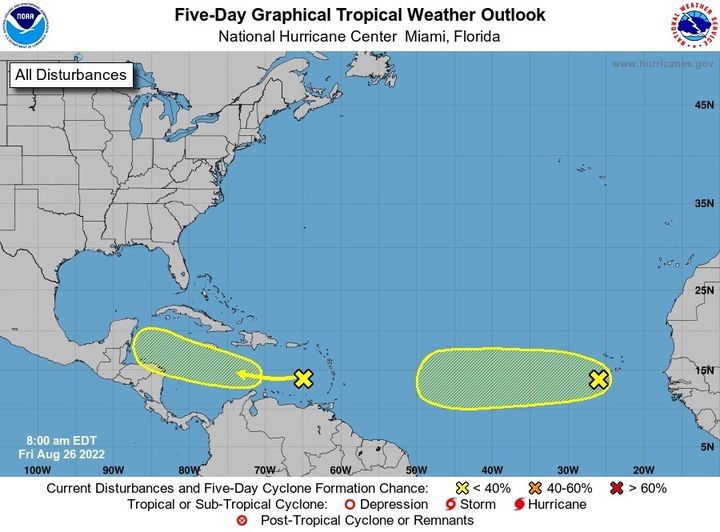THE CALM BEFORE STORMS?
- Job Market
- Upload Ad Requests
- Rates
- Home
- Video
- About Us
- Contact Us
- Business Showcase
- Archives
- Blogs
- Upload Advertisements
- Video News Release
- Front Pages
- Community Notices
- Law Enforcement
- Government
- Community Voice
- Health Care
- International
- Sports
- Politics
- Community
- Entertainment
- Advertorial 2
- Non-Profit Organisation(NPO)
- Adopt a Pet
- Tourism
- CIIPO
- Taste of Class
- Opinions & Editorial
- Environment
- Outstanding Employee
- Outstanding Performance
- Celebration
- Gardening
- Beneficial Ownership
- Tips and tricks
- Cover Stories
- Cost of Living
- Development
- Employment
- Education
- Arts and Culture
- Business
- Global News Briefs
- Hurricane Watch
- Breaking News
- Regional
- Public Notices
- Local News
- Lifestyle
- Finance
- Economic
- Election Center
- COVID - 19
- UK Territories
- Advertorial
- History
- Inspiration
- The Panel
- The Interview
- Cayman Conversation
- Community Notices
- Law Enforcement
- Government
- Health Care
- Sports
- Election Center
- Cayman Conversation
- More
- Front Pages
- Community Notices
- Law Enforcement
- Government
- Community Voice
- Health Care
- International
- Sports
- Politics
- Community
- Entertainment
- Advertorial 2
- Non-Profit Organisation(NPO)
- Adopt a Pet
- Tourism
- CIIPO
- Taste of Class
- Opinions & Editorial
- Environment
- Outstanding Employee
- Outstanding Performance
- Celebration
- Gardening
- Beneficial Ownership
- Tips and tricks
- Cover Stories
- Cost of Living
- Development
- Employment
- Education
- Arts and Culture
- Business
- Global News Briefs
- Hurricane Watch
- Breaking News
- Regional
- Public Notices
- Local News
- Lifestyle
- Finance
- Economic
- Election Center
- COVID - 19
- UK Territories
- Advertorial
- History
- Inspiration
- The Panel
- The Interview
- Cayman Conversation
Subscribe
THE CALM BEFORE STORMS?
THE CALM BEFORE STORMS?

THE CALM BEFORE STORMS?
What so far has been an extraordinarily quiet hurricane season compared to recent years could be about to revert to more familiar weather territory.
Cayman Islands National Weather Service (CINWS) has been monitoring a weather system located in the Atlantic east-southeast of the Windward Islands which could have the potential for development.
“We have been monitoring the development of an invest area that has entered the eastern Caribbean. This disturbance is marked by NHC (National Hurricane Centre) with a 20 per cent chance of cyclone formation over the next 5 days.
“Latest model runs suggest that the disturbance will move south of our area and over the Yucatan. There is a high uncertainty around what this system will do over the next few day as such, residents should continue to monitor the system as we will provide period updates on the system and any potential impacts on the Cayman Islands,” the CINWS has advised.
When it published its 2022 outlook in May this year, the Forecasters at the US The National Oceanic and Atmospheric Administration (NOAA), predicted another above-average hurricane activity this year — which would make it the seventh consecutive above-average hurricane season.
At that time the outlook was for a 65 per cent chance of an above-normal season, a 25 per cent chance of a near-normal season and a 10 per cent chance of a below-normal season.
In their projections, NOAA anticipated “a likely range of 14 to 21 named storms (winds of 39 mph or higher), of which 6 to 10 could become hurricanes, including 3 to 6 major hurricanes of category 3, 4 or 5.”
Halfway through the season, while things might seem to have gone against the grain, NOAA is maintaining its stance but keeping a watchful eye on new developments in the tropical Atlantic.
Storm watchers at the Weather Channel have observed that 2022 is indeed setting a record to date - for the absence of storms.
“The 2022 Atlantic hurricane season is off to its quietest start in 30 years, it reports, but with the caution that “history suggests it won't end up that way.”
Only three named storms have developed so far for the season; Alex, Bonnie and Colin. They were all relatively weak and short-lived, though Bonnie developed into a hurricane but only after it crossed from the Atlantic in Central America into the Eastern Pacific.
This year is the first time since 2017 that a hurricane has not developed by August 1st in the Atlantic, and August is now coming to and end.
Professor Phil Klotzbach of Colorado State University noted in a Twitter post: “For the first time since 1982, the Atlantic has had no named storms between July 3 - August 22.”
He also pointed out that “the long quiet stretch has been quite surprising given the warmed than normal tropical Atlantic sea surface temperatures.”
Is all of that now about to change?
NOAA forecasters are still expecting above-normal activity for the remainder of the 2022 Atlantic hurricane season, although they have slightly decreased the likelihood of an above-normal Atlantic hurricane season to 60 per cent - down from a 65 per cent projection in May.
“We’re just getting into the peak months of August through October for hurricane development, and we anticipate that more storms are on the way,” according to NOAA Administrator Rick Spinrad in a recent update on the season.
Looking out across the Caribbean Sea and into the Atlantic, the current NOAA monitoring is tracking several areas of disturbed weather with varying potential for development.
An Atlantic Ocean tropical wave moving westward about 10 to 15 knots is showing scattered moderate and isolated strong convection for which environmental conditions could support some slow development of this system through the week of August 29th. However, there is said to be a low chance for tropical cyclone development in the next few days.
Closer to Cayman, although several days away, a Caribbean Sea tropical wave has been moving westward at 10 to 15 knots but there was no significant deep convection associated to this tropical wave, NOAA reported.
However, as the system continues to move westward across the Caribbean waters, NOAA is advising that environmental conditions could become conducive for slow development when it moves across the central and western Caribbean Sea.
However, it assures that there is a low chance for tropical cyclone development in the next few days. Otherwise, high pressure over the central Atlantic will support moderate to fresh trade winds in the eastern and central Caribbean with gentle to moderate winds prevailing across the western Caribbean.
Online Poll
Independent or Party: Independents top the Category with 23 Candidates. Select your preference
Popular News
DIRE CONSEQUENCES OF OVER- DEVELOPMENT
14 Apr, 2025
Mexico beat Cayman 20-10 in ‘Big Match X’ Rugby
05 Jun, 2024














Comments (0)
We appreciate your feedback. You can comment here with your pseudonym or real name. You can leave a comment with or without entering an email address. All comments will be reviewed before they are published.